Python is a valuable and flexible programming language designed specifically for teams trying to get a web application up and running. Developers and frameworks are closely related since it is the building blocks of the products being crafted. With such framework, a set of solutions are born, thereby allowing the developer to focus more on the app logic rather than repetitive and other low priority tasks.
Nowadays, the developers even try Python’s robust collection of frameworks to deal with the details of the implementation to fasten the development and prototyping process. There are various well known Python web frameworks out there, from vigorous full-stack frameworks specifically designed from enterprise-based solutions to ultralightweight micro frameworks streamlined for developing small and specialized tools.
Python web frameworks will exclusively help in cutting down the cost and time. Python web frameworks belong to a category where you can save time and effort. We will share some key functionalities of the intriguing Python web frameworks that will help you during the web application development effortlessly and instantly. In this post, we will help you settle on the best framework as per your needs.
What is a Web Framework?
Web frameworks enable developers to compose web applications and services without getting into the details like sockets, protocols, thread management etc… some of the common duties of a web framework is to handle cookies, get form parameters, deal with sessions. There is 2 main type of frameworks available, including:
Full Stack or Micro-Framework
You should be extremely focused while picking a framework and the key things to consider should be the size and sophistication of the project. In case you’re hoping to get a functionality oriented web application that will collaborate with the rest of your association’s frameworks, then a full-stack alternative could conceivably help your team both in terms of time and effort. However, if you’re working on a small and relatively simple project with minimal requirements, the micro frameworks are the best solutions to approach for:
A related inquiry is how much “effort” you require from the framework. A full-stack web framework should have all components you require to develop a fully functional web app– frame generators, access list, templating, etc.– so your team can assemble as per the requirements. This is an alluring option for teams that are attempting to build a product quickly since it enables them to focus only on the development of an app and not the stuff that revolves around it. In any case, if you have sophisticated custom requirements or already working with many custom software’s, you can’t exploit those libraries.
Full-Stack Framework
There are a whole new set of full-stack options available in Python frameworks. Some of the prominent frameworks are TurboGears 2, Pylons, and Web2py. but, the most famous one among them is Django.
Django
It is the most well-known Python framework, and anyone could easily justify the reason behind it. A huge number of the website already utilizes Django, from publishing house to social media and sharing sites to significant establishments and non-profits. Since Django was initially developed for the use in the newsroom, it’s not a big deal that daily publications like the Washington Post and The Guardian work on this framework. New companies/ Start-ups like Eventbrite and Disqus have migrated to Django to improve the conversion rates, while social media giants like Instagram and Pinterest have utilized it to control their dynamic web apps.
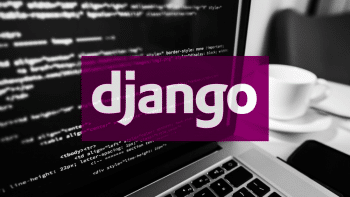 When considered as a framework, Django is known for being quick to build and friendly for amateur developers. It’s a “batteries included” framework, which means it supplies all the basic components you require such as authentication, rendering template, ORM, routing etc… It’s additionally well documented, which isn’t really the case with some other mainstream web frameworks.
When considered as a framework, Django is known for being quick to build and friendly for amateur developers. It’s a “batteries included” framework, which means it supplies all the basic components you require such as authentication, rendering template, ORM, routing etc… It’s additionally well documented, which isn’t really the case with some other mainstream web frameworks.
Django can exceptionally reduce the time in bootstrapping a new project by dealing with a lot of choices. However, what you gain in speed, can be lost in long-term flexibility. For instance, Inbuilt ORM of Django is working efficiently in major scenarios, however, it’s not as ground-breaking as SQLAlchemy which is also termed as the best Python database abstraction tool. While you can hypothetically utilize SQLAlchemy with Django, you’ll lose out some major functionalities that make Django so appealing to start with.
Web2py
Web2py is another prominent full-stack framework. One thing to remember about Web2py is that it isn’t compatible with Python 3. The original developers behind the idea of Web2py have guaranteed a compatible successor for Python 3 but haven’t launched it till now.
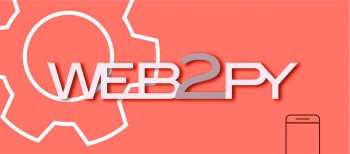 Even though it is 10 years behind the most recent version of Python, Web2py is still utilized by many major enterprises, including multinational banks. What makes this older web framework still engaging for developers are their unique functionalities. For one, it’s as simple and easy to learn as Django, and moreover, this framework is more flexible and portable too. The same code can be employed for almost any VPS with a SQL database or MongoDB, regardless of whether AWS or Google App Engine.
Even though it is 10 years behind the most recent version of Python, Web2py is still utilized by many major enterprises, including multinational banks. What makes this older web framework still engaging for developers are their unique functionalities. For one, it’s as simple and easy to learn as Django, and moreover, this framework is more flexible and portable too. The same code can be employed for almost any VPS with a SQL database or MongoDB, regardless of whether AWS or Google App Engine.
Web2py has got intense support since they possess a well-documented and strong community behind it. Another perfect element is that Web2py accompanies its very own IDE that incorporates a code editor, debugger, bug ticketing framework, a single tick deployment etc… if your association is focused on Python 2 for the upcoming years or you intend to make use of some more established Python libraries and software’s, then Web2py could perfectly suit your requirements.
Pyramid
The pyramid isn’t exactly a full-stack framework. It rather bills itself as the “Goldilocks” framework, Pyramid is enriched with features without forcing any particular way of getting things done, lightweight without abandoning you all alone as your app develops. It’s a most loved web framework among experienced Python developers on account of its transparency and modularity and has been utilized by a moderate team and tech giants like Mozilla, Yelp, SurveyMonkey, and Dropbox.
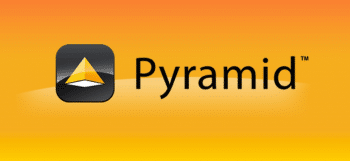 In reality, almost every component of a Pyramid framework can be swapped out. You can pick how you interface with a database, or even what type (or types) of databases you want to connect with. It doesn’t authorize certain choices for you like Django does, and it also discourages some “magic” features which handle certain assignments automatically, however, doesn’t behave in an anticipated or attractive way.
In reality, almost every component of a Pyramid framework can be swapped out. You can pick how you interface with a database, or even what type (or types) of databases you want to connect with. It doesn’t authorize certain choices for you like Django does, and it also discourages some “magic” features which handle certain assignments automatically, however, doesn’t behave in an anticipated or attractive way.
The pyramid is regularly celebrated for its security solutions, which makes it simple to set up and check access control records. Another innovative functionality worth revealing is Pyramid’s Traversal system for mapping URLs to code, which eventually makes it easy to build RESTful API’s.
Micro Frameworks
Consider the possibility that you don’t need a hand-holding or sophistication of a full-stack framework. Nowadays, modern web apps require bunches of moving parts, including database abstraction, frame approval, and modified access control records. But, there are a lot of web applications that doesn’t require any of it. For those sort of projects, a micro framework might be exactly what’s required.
These ultra-lightweight frameworks are developed to get dead web apps up and running as fast as possible. Their capabilities are minimal by design– any functionality you could get by installing another library is intentionally left out. An advantage of working with this moderate approach is that your code can be cleaner and site be quicker. This is because, micro frameworks are less abstracted than full-stack structures. The code you compose will be significantly closer to HTTP capacities than with a more beginner friendly framework.
Flask
Flask is undoubtedly the most famous microframework for Python, and a standout amongst the most well-known Python structures, period. Like Django, it’s developed to get web applications up and running as fast and effortlessly as possible. Regardless of its tiny size, Flask has been utilized by huge organizations, including LinkedIn and Pinterest. 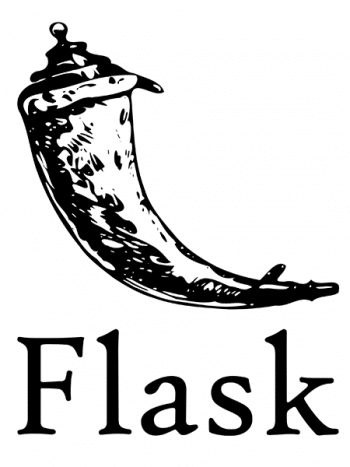 In any case, here’s the twist, since flask is suited to littler, easier projects than Django. So, you can expect a web server development, support for Google App Engine and in-built unit testing. Since there is no database abstraction layer, form verification, validation and auto upload features are disabled. However, every one of these features can be included via extensions. Some key setups incorporate SQLAlchemy for the database or Jinja2 for templating and CouchDB.
In any case, here’s the twist, since flask is suited to littler, easier projects than Django. So, you can expect a web server development, support for Google App Engine and in-built unit testing. Since there is no database abstraction layer, form verification, validation and auto upload features are disabled. However, every one of these features can be included via extensions. Some key setups incorporate SQLAlchemy for the database or Jinja2 for templating and CouchDB.
Some Python designers opt Flask to Django on the grounds that Flask is increasingly “pythonic,” in that, it generally adheres to the Python mantra of there being one approach to accomplish something and that code ought to be clear about what it’s doing. In case you prefer clean code from the scratch, Flask might be a decent alternative.
Bottle
Bottle is another prominent micro framework. It was initially developed for building web APIs, that is still an excellent use case for it. What is more intriguing about the Bottle is, it tries to execute everything in one single document, which should give you a brief view of how “micro” it is designed to be.
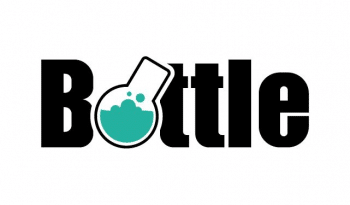 The Out of the box functionalities include templating, routing, utilities, and some fundamental abstraction over the WSGI standard. Like Flask, you’ll be coding significantly nearer to the metal than with a full-stack system. Regardless of their, Bottle has been employed by the Netflix to create web interfaces.
The Out of the box functionalities include templating, routing, utilities, and some fundamental abstraction over the WSGI standard. Like Flask, you’ll be coding significantly nearer to the metal than with a full-stack system. Regardless of their, Bottle has been employed by the Netflix to create web interfaces.
Other Popular Frameworks
We’ve gone through some of the most prevalent Python systems that are generally used, yet there are a variety of options you could opt for. Underneath, we’ll quickly take a gander at a couple of others which could perform well in particular circumstances.
Tornado is a Python web framework particularly developed to tackle the C10k issue (ie, it can deal with in excess of 10,000 simultaneous connections if properly configured) using asynchronous I/O. This gives it a solid appeal for projects that require elite and countless concurrent users.
CubicWeb is an intriguing web framework that is very surprising entirely different from the rest of the frameworks. It’s a piece of the semantic web. In layman’s terms, it’s a system that strives to demonstrates information in a way that is less demanding for PCs to get it. It replaces the Model and View portion of MVC with a solitary concept– the data cube which can be utilized to develop different components, similar to Docker for the web.
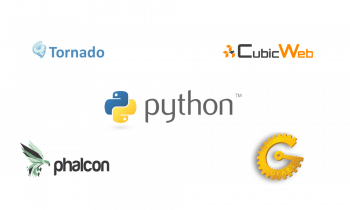 Phalcon is a micro-framework that is tied in with building cloud APIs. Like other micro frameworks, it keeps minimal dependencies and maintains a strategic distance from complex features. However, unlike other systems, it’s wasn’t developed for serving HTML pages. Rather, it’s for building RESTful APIs quickly.
Phalcon is a micro-framework that is tied in with building cloud APIs. Like other micro frameworks, it keeps minimal dependencies and maintains a strategic distance from complex features. However, unlike other systems, it’s wasn’t developed for serving HTML pages. Rather, it’s for building RESTful APIs quickly.
Final Note
Even though, Android has a remarkable SDK out of the box, the implementation of Python instead of Java possess a huge advantage to website and app development (using Kivy) since it offers quicker turnaround time and reuse of Python libraries.
Python web development is a reliable and secure Development Language utilized for secure and agile web app development. It is a standout amongst the available and is the most dependable option to shorten your development time to attain a top notch and robust web app and site. You can consult with an experienced python developer and take their counsel on your project for better guidance.
































































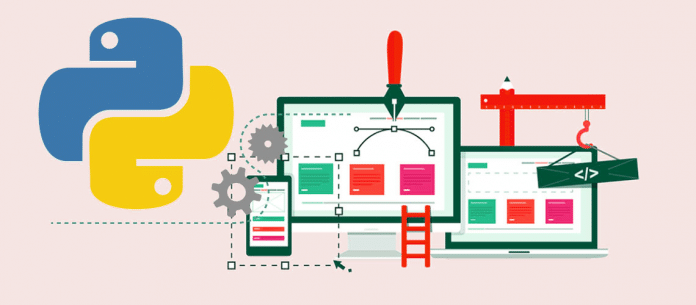
















hey how can i contact with you ?